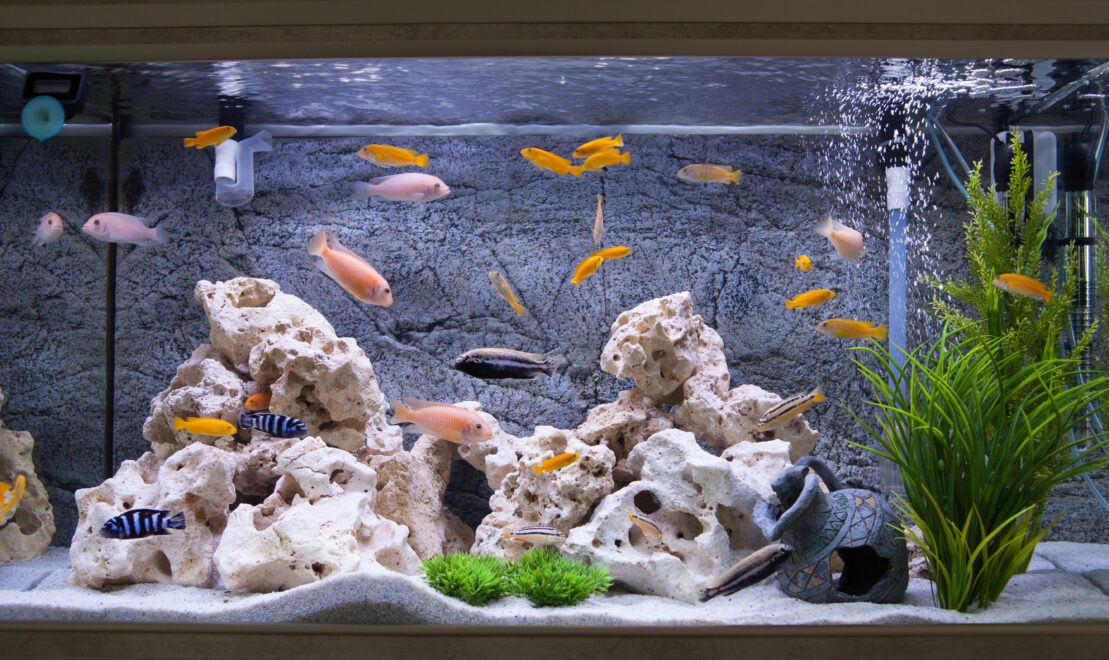How To Remove Sand From Aquarium
Aquariums are peachy when they're make clean, but they need frequent maintenance to proceed them that way. Sand or gravel is ofttimes the first decoration you'll place into your aquarium. Fish occur naturally over sand, gravel, silt, stones and rocks, and many species are adapted to sift sand to find food. It gets dirty rapidly though.
Sand sifters
Add sand sifting fish species like Corydoras catfish, which use their short whiskers to probe the sand for food. Add a group of v to tanks over 60cm in length, and they will sit on, swim over and sift through the sand bed all solar day long, keeping information technology turned over and helping to keep it clean. Corydoras and suckermouthed catfish are often referred to as cleaner fish, although they can't survive just on scraps and should be fed a sinking food designed particularly for them.
Keep Corydoras over a dirty substrate and they tin can get infections, which wear away their frail barbles. So yous'll need some sand cleaning appliance too.
Gravel vacuum
Gravel vacuums are wonderfully simple devices which keep aquarium sand and gravel clean. A combination of a flexible syphon tube and a wider diameter piping, gravel vacuums suck gravel and sand upwardly the wide pipage, tumbling it and releasing the dirt and debris. Dirt floats upward the tube and into a bucket, and the substrate sinks back down to the aquarium lesser.
Gravel is easier to vacuum than sand because information technology'due south heavier. Beingness fine, sand tin become sucked up and removed by a gravel vacuum, simply with practice the vacuum tin be hovered slightly higher above the sand and information technology will be lifted, cleaned and dropped back down.
Power vacuums
If syphoning isn't your thing, a battery-powered gravel vacuum can either trap waste matter and return make clean h2o to the tank or connect to a hose to remove dirty h2o in a h2o change. Suitable for sand or gravel, just hover the device slightly higher if cleaning fine sand.
Elbow grease
Sand sifters and syphons can be given a hand by you running your fingers through sand beds regularly. If you lot don't mind getting a wet arm, rake the sand bed with your fingers, turning it over and dislodging clay and debris. Combine this with a water change and mechanical filter clean, and dirt will be removed permanently. Wash easily later on and arm yourself with a towel to finish drips.
Black sand
Fine sand can compact and turn black if non cleaned regularly. The black colouration comes from anaerobic leaner, taking upward residence in dirty sand and producing a rotten smell. Anaerobic conditions are bad for fish and the health of the aquarium, so deep sand beds should be avoided and shallow, frequently cleaned sand is the order of the twenty-four hours for a healthy aquarium.

5 Golden rules
- Not all sand is the same, so only employ sand that is labelled as aquarium sand. Avoid builders sand as it will be muddied and will adversely bear upon pH.
- Clean sand thoroughly before yous place it in the aquarium. New sand can turn the water cloudy, so rinse in a bucket for adding information technology.
- Use a thin layer. Sandbeds over 2.5cm deep are more prone to compacting and turning anaerobic.
- Don't mix fine sand with coarser grits and gravels as the sand volition work its mode to the bottom, leaving the larger gravel on top.
- Use a combination of substrate dwelling fish and regular gravel vacuuming to keep your sand clean and pristine.
Source: https://www.swelluk.com/help-guides/how-to-clean-aquarium-sand/

0 Response to "How To Remove Sand From Aquarium"
Post a Comment